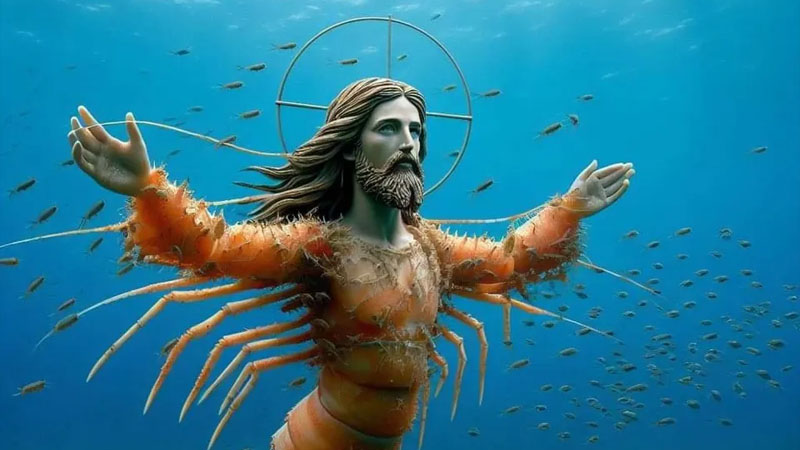Exclusive content

The keyword “shrimp” has recently garnered a lot of attention, not for culinary reasons, but due to a peculiar social media phenomenon. A search for “shrimp Jesus” on Facebook reveals a bizarre trend: dozens of artificial intelligence (AI) generated images depicting crustaceans meshed with stereotypical images of Jesus Christ. These hyper-realistic images have gone viral, with some accumulating over 20,000 likes and comments. So, what is driving this strange trend?
The Dead Internet Theory Explained
One explanation for the surge in AI-generated content, including the “shrimp Jesus” images, is the “dead internet theory.” This theory suggests that a significant portion of online activity and content is no longer produced by humans but by AI agents. These agents create posts and generate images that are specifically designed to maximize engagement on social media platforms like Facebook, Instagram, and TikTok.
AI’s ability to produce engaging and viral content is evident in the “shrimp Jesus” phenomenon. The images combine elements of absurdity and religious iconography, making them highly shareable and likely to attract attention. This type of content is engineered to go viral, leveraging the unique mix of humor, shock, and curiosity.
Artificial Engagement: A New Reality?
The dead internet theory goes beyond just content creation. It posits that many of the interactions with such content—likes, comments, and shares—are also managed by AI agents. This creates a cycle of artificial engagement, where bots interact with AI-generated posts, amplifying their reach and visibility. The result is an online environment heavily influenced by non-human agents, blurring the lines between genuine human interaction and automated activity.